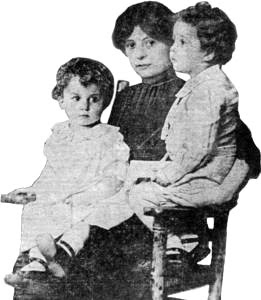Questionnaires were sent out to Year 2 parents after 1 ½ terms of their children working in role as a shipwreck salvage company. Here are some quotes from the returned questionnaires - I was stunned by these responses and their understanding of the depth and range of learning in MoE:‘ She has often talked about the company work she is involved in – she shows me the pictures and work relating to this during the morning before class begins.’
‘He will talk about what he has learned without prompting which isn’t normal. He is excited about the way you are teaching him which is brilliant!’
‘She seems very engrossed in the team effort this work involves and has told us all about the different roles. She’s the bones expert! ‘
‘She’s definitely motivated by this type of learning – there’s obviously a great deal of enthusiasm for this project, not to mention the excitement factor. She is always pleased to tell us she will be doing company work today. It’s almost role reversal and she’s become the adult!’
‘It extends and challenges her way beyond the classroom, e.g. when we were at the beach she will be beach combing for objects to include in her company work or asking us questions or looking in books we have at home.’
‘It‘s very important for her, as an only child, to learn to work in a team situation. It has stimulated her to ask various questions she might not have asked about before.’
‘It’s a great way of holding onto children’s attention and interest rather than the obvious teaching formats.’
‘She talks about it all vividly.’
‘He’s been consumed by it!’
‘She really enjoys working in the salvage company. She’s told us everyone has a role and is involved.’
‘He’s completely motivated – I believe it’s because it’s so different – personal and intriguing – he takes it to heart.
‘She is motivated - it’s the only thing she’s come home from school talking about. The role play helps her to get involved.’
‘I think it’s crucial as it covers all learning styles and needs.’
‘Carry on educating others about the importance of this exciting and much needed approach to teaching. I only wish that we could guarantee that Year 2 children will get more chances in the future to experience this imaginative work.’
‘He is coming to terms with life and death through this work together with with the archeological fascination of being involved with salvaging this historic monument.’
‘It’s a fantastic and exciting way of learning. I really like the way it has taken away some of the routine ways of learning and basics.’
‘Lots of chat about the unfolding story of the company – especially the passengers’ personal stories (i.e. The Titanic).
‘There are lots of exciting things to do – we’ve heard all about who is doing what in the company, about diving – looking at the real gear - and about the history of the Titanic . We’ve taped TV documentaries and looked up things in books to feed the interest developed.’
‘Working with the group and with partners is fun. It’s memorable and interesting. The children use their imagination to lose themselves in the drama – they’re really living these experiences rather than just learning about them in a more traditionally passive way.’
‘ He is definitely being extended. He is really keen to learn more. He’s been to the library to find books on this topic and searches on the internet.’
(An EAL parent): ‘ She said many things about the Salvage Company. She told about under the sea and the cylinder help the breath and they have special camera and clothes. The children learn lots of general education and they know real problems and solve problems.’
‘It seems to give school work a purpose.’
‘It encourages imagination and broadens their horizons – most 7 year olds would probably never give any thought to the considerations of running a company.’
‘The Titanic has completely captured his imagination. He gets very into the role play and scenarios. He was particularly interested in the lives of the people on board.’
‘I like the way that one subject can cover all sorts of curriculum areas. It makes learning more relevant and cohesive.’
‘He tells us all about it! Various jobs – he thinks he has an important job as a restorer. ‘
‘It teaches various topics in a practical sense, like entrepreneurship, research, team-work and other jobs and responsibilities.’
‘I like the way they work in a team with a focus, communicating with peers, bringing various talents and understanding.’
‘This is a creative way of teaching. They have goals and responsibilities – it is definitely a good way to learn.’


